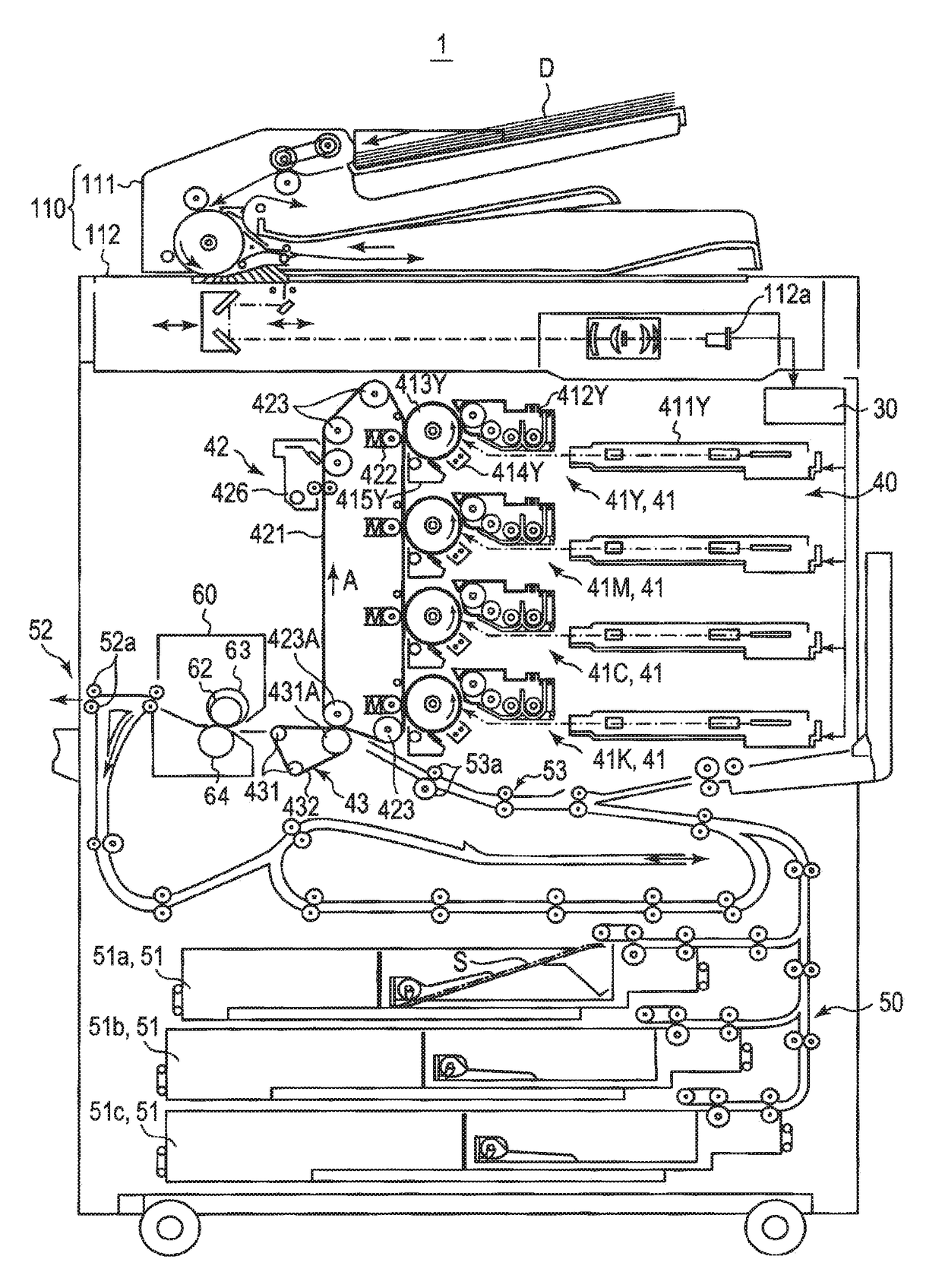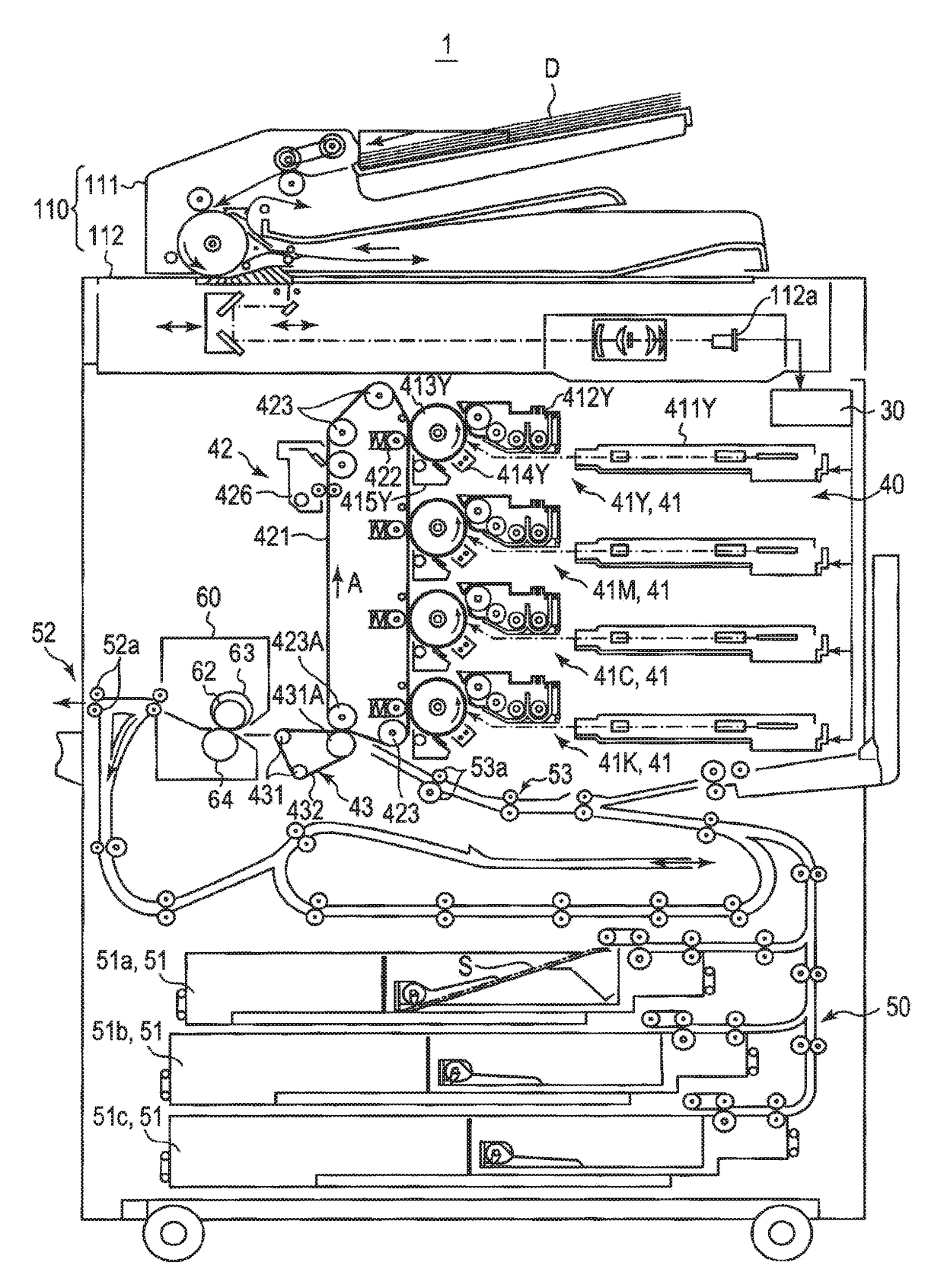Toner and method of producing the same
a technology of latent image and toner, applied in the field of latent image development toner, can solve the problems of insufficient storage stability of toner, unsatisfactory level of uniform chargeability of toner particles, and difficulty in uniform dispersal of nucleating agent in toner base particles, etc., to achieve high-temperature storage stability, uniform chargeability, and high-temperature fixability. the effect of high stability
- Summary
- Abstract
- Description
- Claims
- Application Information
AI Technical Summary
Benefits of technology
Problems solved by technology
Method used
Image
Examples
example 1
Production of Cyan Developer 1
[0189]A reaction vessel equipped with a stirrer, a temperature sensor, and a condenser tube was charged with 180 parts by weight (on a solid basis) of the dispersion DX1, 20 parts by weight (on a solid basis) of the dispersion DHBC1, and 2,000 parts by weight of ion-exchanged water. The pH of the mixture was then adjusted to 10 by adding a 5 mol / liter sodium hydroxide aqueous solution.
[0190]Subsequently, 30 parts by weight (on a solid basis) of the dispersion DCy was added to the resulting dispersion, which was followed by adding 10 parts by weight (on a solid basis) of the dispersion Dcc1. Subsequently, an aqueous solution obtained by dissolving 60 parts by weight of magnesium chloride in 60 parts by weight of ion-exchanged water was added to the resulting dispersion under stirring at 30° C. over 10 minutes. Subsequently, the dispersion was allowed to stand for 3 minutes and then started to be heated. The resulting dispersion was heated to 80° C. over ...
examples 2 to 11
Production of Cyan Developers 2 to 11
[0196]Cyan developers 2 to 11 were each produced as in the production of the cyan developer 1, except that the dispersions Dcc2 to Dcc11 were each used instead of the dispersion Dcc1.
[0197]The microstructure of the toner base particles 2X to 11X in the cyan developers 2 to 11, respectively, was observed with a TEM as described above. As a result, it was observed that the cyan toner base particles of each developer had a sea-island structure in which the CPEs and the nucleating agent formed dispersed phases (domains) while the amorphous resin formed a continuous phase (matrix). The cyan toner base particles 2X to 11X had the same volume average particle size as the corresponding cyan toner particles, and all the volume average particle sizes were in the range of 6.0 to 6.5 μm.
examples 12 and 13
Production of Cyan Developers 12 and 13
[0198]A cyan developer 12 was produced as in the production of the cyan developer 8, except that the added amount of the dispersion Dcc8 was changed to 1 part by weight (on a solid basis). A cyan developer 13 was produced as in the production of the cyan developer 8, except that the added amount of the dispersion Dcc8 was changed to 20 parts by weight (on a solid basis).
[0199]The microstructure of the toner base particles 12X and 13X in the cyan developers 12 and 13, respectively, was observed with a TEM as described above. As a result, it was observed that the cyan toner base particles 12X and 13X both had a sea-island structure in which the CPEs and the nucleating agent formed dispersed phases (domains) while the amorphous resin formed a continuous phase (matrix). The cyan toner base particles 12X and 13X had the same volume average particle size as the corresponding cyan toner particles, and all the volume average particle sizes were in the ...
PUM
| Property | Measurement | Unit |
|---|---|---|
| temperature | aaaaa | aaaaa |
| melting point | aaaaa | aaaaa |
| melting point | aaaaa | aaaaa |
Abstract
Description
Claims
Application Information
 Login to View More
Login to View More - R&D
- Intellectual Property
- Life Sciences
- Materials
- Tech Scout
- Unparalleled Data Quality
- Higher Quality Content
- 60% Fewer Hallucinations
Browse by: Latest US Patents, China's latest patents, Technical Efficacy Thesaurus, Application Domain, Technology Topic, Popular Technical Reports.
© 2025 PatSnap. All rights reserved.Legal|Privacy policy|Modern Slavery Act Transparency Statement|Sitemap|About US| Contact US: help@patsnap.com


